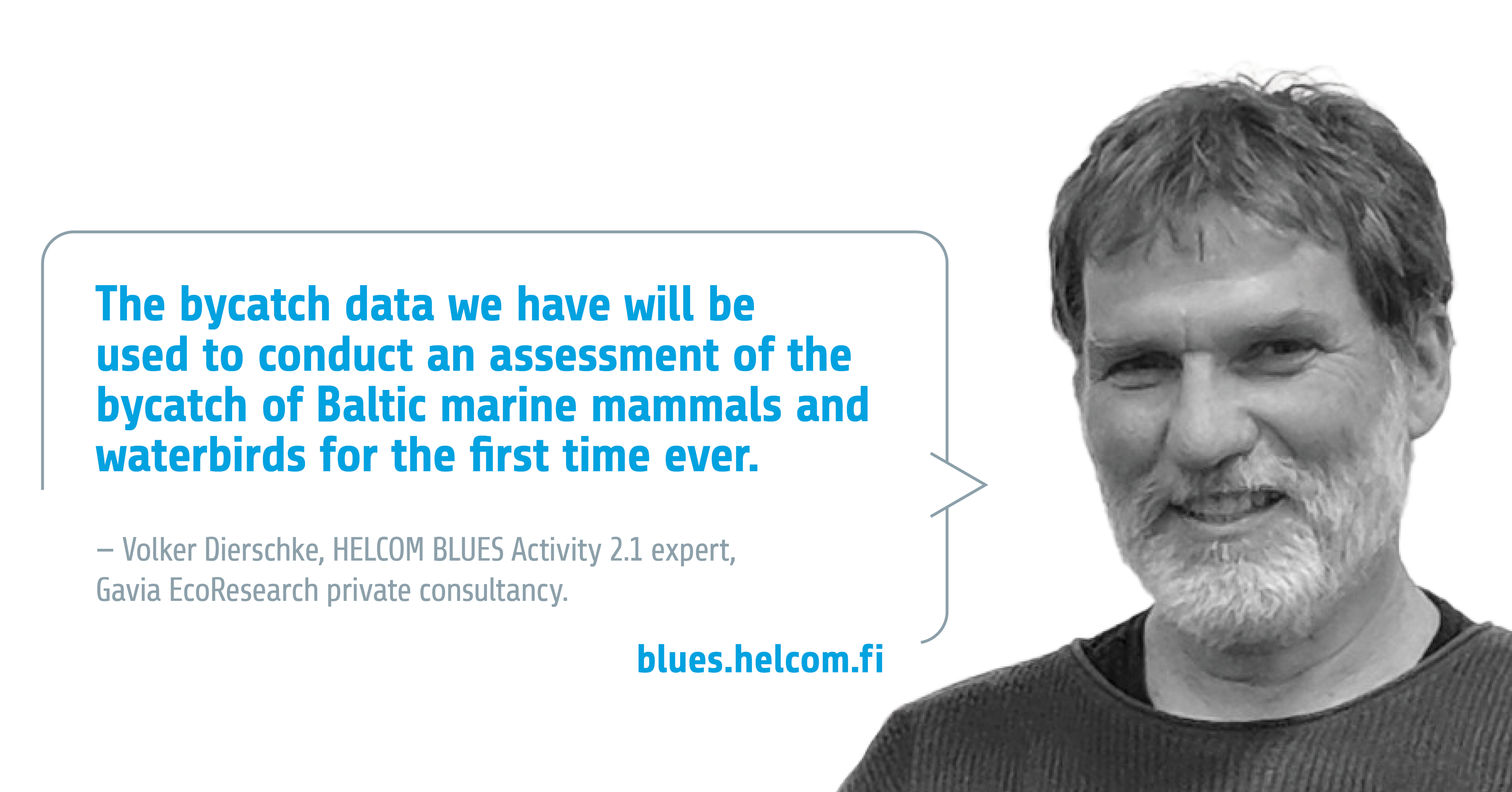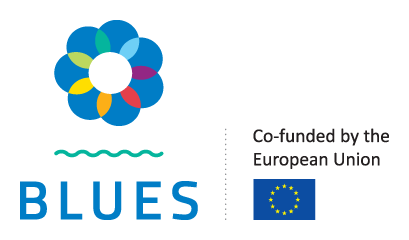
Volker Dierschke is a marine bird expert for more than 30 years. With his private consultancy company Gavia EcoResearch he is currently engaged in assessments of the marine environment in the frame of the EU Marine Strategy Framework Directive and in developing management plans for protected areas in the German parts of the Baltic Sea and North Sea. Currently he is co-chairing the joint marine bird expert group of HELCOM, OSPAR and ICES.
What is your Activity/Task in HELCOM BLUES all about? What main challenges and/or pressures on the Baltic Sea does it try to solve?
Activity 2 of HELCOM BLUES is about biodiversity in the Baltic Sea. My task deals with the death of many marine mammals and birds in fishing gear. The animals get incidentally by-caught when diving, especially in gillnets, and drown. Together with my colleagues, I want to show where it is particularly dangerous for these marine animals in this respect, because there is a lot of fishing in their staging areas. On the other hand, facts that are known about bycatch will be used to assess the state of the Baltic Sea. The challenge is to overcome a massive lack of data, because both the fishing effort and the rate of bycatch (i.e. the number of mammals or birds bycaught per kilometre net length) are still recorded in a qualitatively and quantitatively insufficient way.
What are the planned outcomes of your specific BLUES Activity/Task?
Our work on the bycatch problem in the BLUES project will result in risk maps, which highlight areas of high risk for seals and diving waterbirds to get bycaught in static nets (gillnets, fykenets). These maps shall make it possible to identify problematic areas and initiate mitigation measures with a focus on areas of highest risk. On the other hand, the few bycatch data we have will be used to conduct an assessment of the bycatch of Baltic marine mammals and waterbirds for the first time ever. We recognise it as an important contribution to the assessment of the state of the Baltic Sea, even if not all parts of the Baltic will see such an assessment already now. Hopefully, a gap analysis can improve monitoring in the near future.
How will your BLUES Activity/Task benefit your organization in particular and the Baltic Sea in general?
Bycatch is a severe problem for the populations of a number of endangered species in the Baltic Sea. For example, most likely tens of thousands of waterbirds are drowning in static nets every year. Their population viability is threatened due to such additive mortality. All this is happening, although it has been pointed out for many years. It is to be hoped that the representatives of fisheries and nature conservation will sit down together to initiate sustainable fishing. This would not only be beneficial for the marine environment, but also for the fishery itself in the long run.
